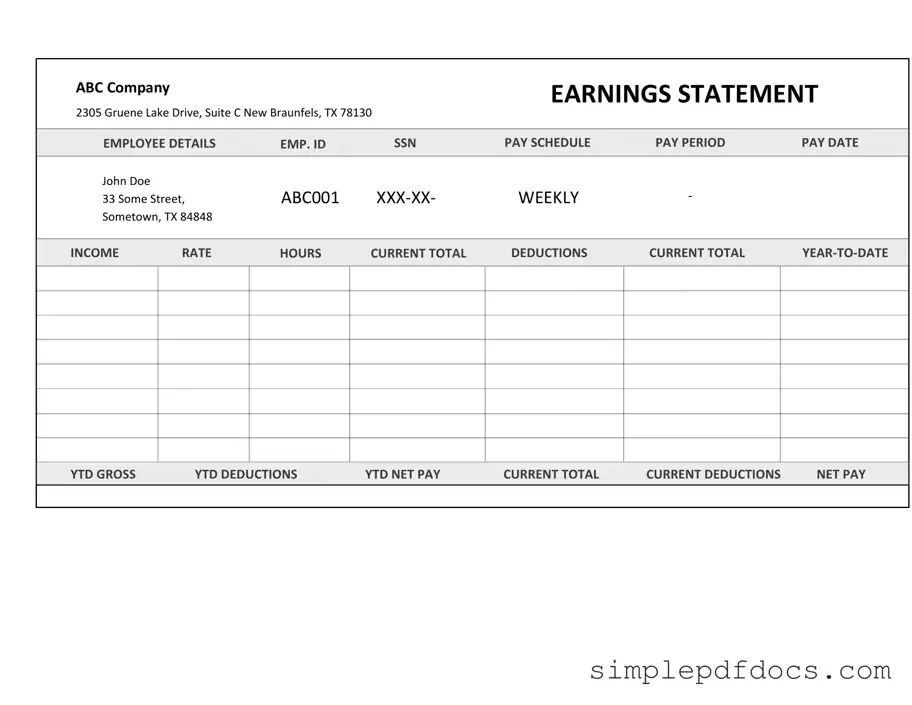The Independent Contractor Pay Stub form serves as a crucial document for both contractors and businesses, ensuring clarity and transparency in financial transactions. This form outlines essential details such as the contractor's name, the services provided, and the payment amount, helping to establish a clear record of earnings. It typically includes information about the payment period, any deductions made, and the net amount received, allowing contractors to track their income effectively. Additionally, the form may specify the method of payment, whether by check, direct deposit, or another means. By providing a comprehensive overview of earnings and deductions, the Independent Contractor Pay Stub form not only aids in personal financial management but also serves as a vital tool for tax reporting and compliance. Understanding the components of this form is essential for independent contractors to ensure they receive fair compensation for their work while maintaining accurate records for their financial needs.
